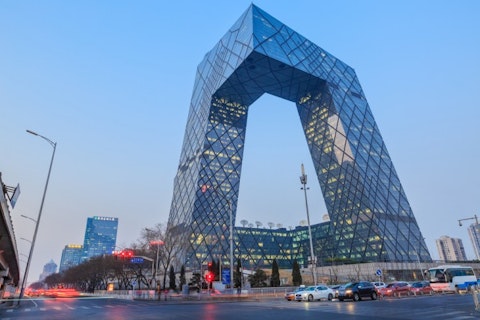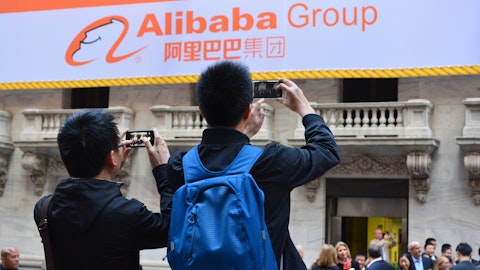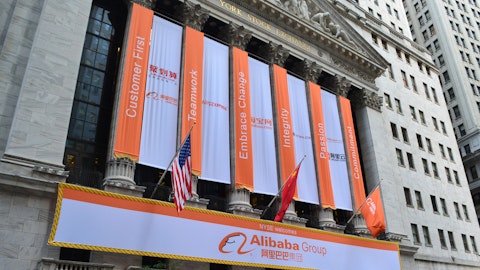Much has been discussed of the ailments affecting the Chinese economy and its stock markets. However, major China ETFs like the iShares FTSE/Xinhua China 25 Index (ETF) (NYSEARCA:FXI), the iShares MSCI China Index Fund (NASDAQ:MCHI), and the SPDR S&P China (ETF) (NYSEARCA:GXC) have gained 7.78%, 7.55% and 7.29% year-to-date, respectively, outperforming the S&P 500, which has returned 4.76%.
Having said this, the KraneShares Trust (NASDAQ:KWEB), an ETF focused on the Chinese internet sector, has been much more volatile, in addition to posting gains of only 3.63% this year. In this article, we’ll take a look into some of the most popular Chinese stocks among the hedge funds that we track and see how they traded them during the second quarter.
At Insider Monkey, we track around 750 hedge funds and other institutional investors. Through extensive backtests, we have determined that imitating some of the stocks that these investors are collectively bullish on, can help retail investors generate double digits of alpha per year. The key is to focus on the small-cap picks of these funds, which are usually less followed by the broader market and allow for larger price inefficiencies (see the details here).

Zhao jian kang / Shutterstock.com
#5. 58.com Inc (ADR) (NYSE:WUBA)
– Number of Hedge Fund Shareholders (as of June 30): 29
– Total Value of Hedge Funds’ Holdings (as of June 30): $916.18 million
– Hedge Funds’ Holdings as Percent of Float (as of June 30): 14.1%
Shares of 58.com Inc (ADR) (NYSE:WUBA) have lost almost 30% year-to-date. Over the second quarter alone, they plummeted by roughly 16.8%, opening attractive entry points for investors along the way. Consequently, the number of funds in our database long the operator of online classifieds and listings platforms rose by 7.4% to 29. Among them were Lei Zhang‘s Hillhouse Capital Management, which boosted the size of its holding by 179% to 3.71 million shares, and Daniel S. Och’s OZ Management, which held 3.62 million shares on June 30.
58.com Inc (ADR) (NYSE:WUBA) has experienced plenty of volatility in the third quarter, but is up by more than 1%, which included recent help from a Wall Street Journal article about the increase in venture capital investment in China. On the other hand, shares tumbled in mid-August after the company reported second quarter revenue of $297.82 million, $5.6 million below the Street’s consensus, though its $0.26 earnings beat thanks to EPS of $0.15 was impressive.
#4. Ctrip.com International, Ltd. (ADR) (NASDAQ:CTRP)
– Number of Hedge Fund Shareholders (as of June 30): 43
– Total Value of Hedge Funds’ Holdings (as of June 30): $2.2 billion
– Hedge Funds’ Holdings as Percent of Float (as of June 30): 14.4%
Unlike its peer above, Ctrip.com International, Ltd. (ADR) (NASDAQ:CTRP) witnessed a 35.8% reduction in hedge fund support during the second quarter, as its stock tumbled by almost 8.5%. Funds that left the company included Israel Englander’s Millennium Management, which held 1.86 million shares on Mach 31, and Steve Cohen’s Point72 Asset Management, which disposed of its half-a-million shares between April and June. Since the second quarter ended, Ctrip.com International, Ltd. (ADR) (NASDAQ:CTRP) has gained 8.7%, with the company’s second quarter results proving to be a key driver of bullish sentiment. Revenue of $664 million, up by 62.9% year-over-year, was in-line with expectations, while a net loss of $0.17 per share was $0.02 smaller than anticipated.
Follow Trip.com Group Limited (NASDAQ:TCOM)
Follow Trip.com Group Limited (NASDAQ:TCOM)
We’ll see how hedge funds felt about their three favorite Chinese stocks during the second quarter on the next page.





